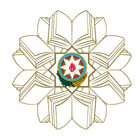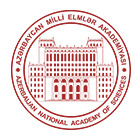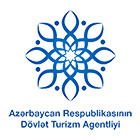Traditional art of Azerbaijani carpet weaving in the Republic of Azerbaijan
It is so easy to get lost in theintricate patterns of Azerbaijanicarpets. One of the great poets of the past said about them: “Bliss for the legs, joy for the eyes”. Azerbaijani carpets can be found in the exhibitions of the Hermitage, the Victoria and Albert Museum in London, New York’s Metropolitan Museum, the Louvre and the Vatican. The mere listing of such well-known repositories of artifacts testifies to the uniqueness of this type of Azerbaijani art. By the way, it is no less ancient than painting or sculpture. Carpets were used in the Bronze Age to decorate rooms of eastern kings and tents of chieftains.
The West began to enjoy the warmth of a fluffy pile and the brightness of the colors of carpets much later. In the 15th century, Azerbaijani carpets appeared in the courts of kings and in the homes of the Western European nobility. They caused so much delight there that they became an indispensable attribute of not only palace interiors, but also gala paintings. Royals, followed by members of the nobility, ordered their portraits against the backdrop of Azerbaijani carpets. Specialists recognize their characteristic pattern on the paintings of such famous artists as Van Eyck, Hans Memling, Antonello da Messina, Carlo Crivelli, Domenico di Bartolo and Hans Holbein.
Even magical properties were ascribed to carpets. It was believed that their patterns can help to maintain health and make the house prosperous. But even without the mysticism there were a lot of secrets in Azerbaijani carpets Thanks to choice of wool, natural dyes and the skills of the weavers, the flavor and coloring of carpets and rugs acquired greater depth and brightness over time. For centuries, Azerbaijan remained one of the trendsetters for carpets. Their artistic properties and high quality were mentioned by Arab, European and Russian travelers. The historian and art critic, P. R. J. Ford, noted that “although carpets are now made in Dagestan, Georgia and Armenia, the real birthplace of Caucasian carpets is Azerbaijan and the skills and ideas of Azerbaijani weavers are felt throughout the Caucasus”.
In Azerbaijan, the carpet was part of everyday life. People rested, ate and received guests on them. They were woven almost in every Azerbaijani house. In this variety of techniques of weaving and dyeing, patterns and ornaments, regionalschools inevitably emerged: Ganja- Gazakh, Guba-Shirvan, Tabriz and, of course, Karabakh.
In the lowland part of Karabakh there were several places where carpets with traditional Karabakh compositions showing scenes from the works of Nizami, Fuzuli and other Azerbaijani poets were produced in large quantities. This is especially true for Shusha, Jabrayil, Agdam, Barda and Fuzuli. It was there that the Karabakh carpet school formed, having a strong impact on neighboring regions. Materials published at the end of the 19th century suggest that carpets and rugs woven in Shusha in that period had no match by their beauty and quality in the whole of the Caucasus. The encyclopedia of Brockhaus and Efron released in 1904 emphasizes: “Shusha is the largest center of carpet production in the Caucasus.” A typical example of these Shusha products are carpets of the Malibayli, Lampa, Bagchadagullar, Bulug, Sakhsidagullar, Nalbaki-Gul, Gulaylig, Munjug and Zarmahal types. The Metropolitan Museum of Art has an 18th century Karabakh carpet Verni. A product of Shusha masters exhibited in the Boston Museum of Fine Arts dates back to the same century.
Azerbaijan produced almost all types of carpets and rugs existing in the world: wool, silk, gold and silver threads, pile and pileless carpets, kilims, rugs, zili, verni, sumakh, mafrashi, khurjuns and shadda. Their distinguishing feature is the high density of nodes (from 1,600 to 4,900 per square decimeter), which is why the “lifespan” of the Azerbaijani carpet is from 300 to 500 years. It is a symbol of luxury, gentility and refined taste. You can get acquainted with all the richness and diversity of this type of folk art in the Baku Carpet Museum, which keeps more than 15,000 carpets and rugs.
UNESCO appreciates the unique value of works of Azerbaijani artists. In 2010, at the 5th session of the Intergovernmental Committee for the Safeguarding of the Intangible Cultural Heritage, the traditional art of Azerbaijani carpet weaving in the Republic of Azerbaijan was inscribed on the Representative List of the Intangible
Cultural Heritage of Humanity.
















